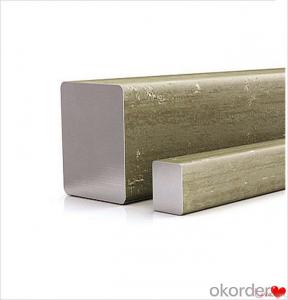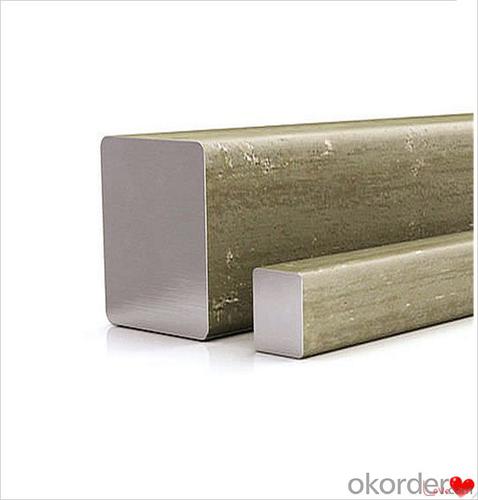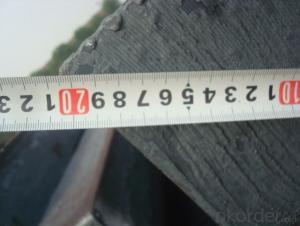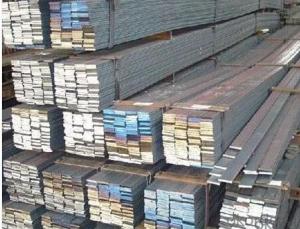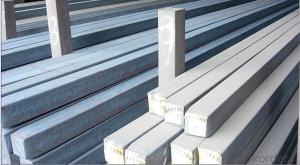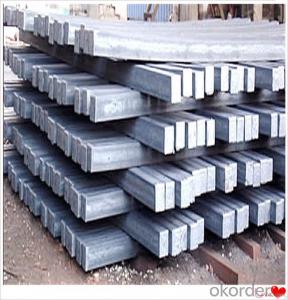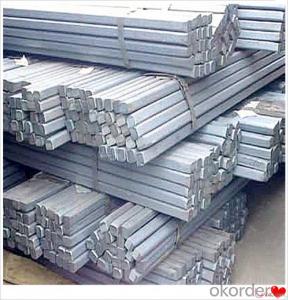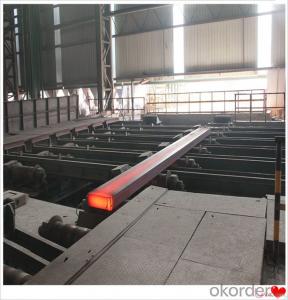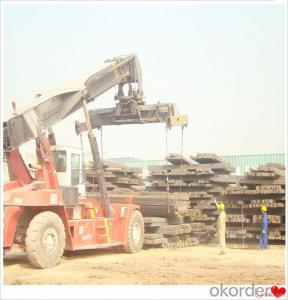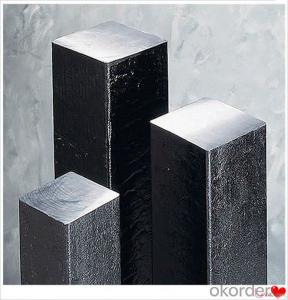Titanium Billet Turbo Compressor Wheel Q235,Q255,Q275,Q345,3SP,5SP,20MnSi
- Loading Port:
- China main port
- Payment Terms:
- TT OR LC
- Min Order Qty:
- 20 m.t.
- Supply Capability:
- 200000 m.t./month
OKorder Service Pledge
OKorder Financial Service
You Might Also Like
Titanium Billet Turbo Compressor Wheel Q235,Q255,Q275,Q345,3SP,5SP,20MnSi
Specification
Steel billet(ingot) by cogging or breakdown of semi-finished products, is the raw material of all kinds of steel mill. Billet section of square, round, flat, rectangular and abnormity of several kinds of, mainly related to the shape of rolled products.
CNBM Q235,Q275,Q345,3SP,5SP,20MnSi Billets Steel
Hot Rolled Steel Billets/ Mild Steel Bar/ Billet Steel
Specification (see below)
Standard: GB/JIS/ASTM
Size: 50*50mm-180*180mm
Length: 3-12mtrs or Customised
Steel material: Q235,Q255,Q275,Q345,3SP,5SP,20MnSi
Technique: Hot rolled
FOB Unit Ton Price $250-350 and Usually I will quote you CFR price.
MOQ: Usually 1000-10000MT/size
Shipment:By Container,Bulk Vessel
Packaging Details: bundles with steel strips or as customers's requirements
Delivery time: Usually within 30 days after the deposit/LC
Inspection:Third party inspection before loading.
Technical data
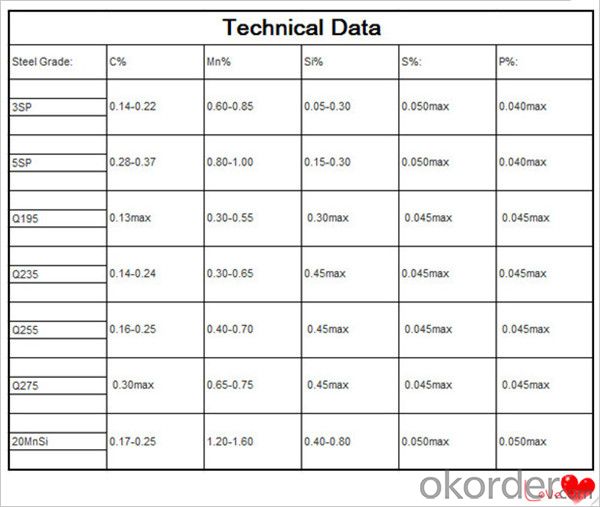
Feature Steel Billet
Rectangular billet continuous casting billet and mainly general carbon steel, low carbon low silicon cold-rolled material, high quality carbon structural steel, high strength low alloy steel, special steel, etc.
The billet is mainly divided into two kinds from the shape:
Slab: cross section width and height of the ratio of the larger, mainly used for rolling plate.
Billet: equal cross section width and height, or a huge difference, mainly used for rolling steel, wire rod. ,
Steel billets have distinct characteristics as compared with already furnished steel bars and products. Billets have a specific grain structure, which enables the metal to be processed more intricately. Steel billets are also known for their malleability and ductility, especially when exposed to varying temperatures during shaping and molding.
Packaging & Shipping
1. Packaging:
1) Small size: in bundles
2)Big size: in bulk
3)in plastic packing or as per customer requirement
2. Delivery time:
1) Normal size: within 7days send from warehouse directly
2) Special size: with 25-30days customer made for you
3. Trade terms:FOB/CFR/CIF
4. Shippment:
1) length:≤5.8m loaded in 20FT Container with 25-27tons
2) length:≤11.8m loaded in 40FT Container with 25-27tons
3) lengnth:≥12m shipped by bulk vessel, FILO terms
Steel Billet Images
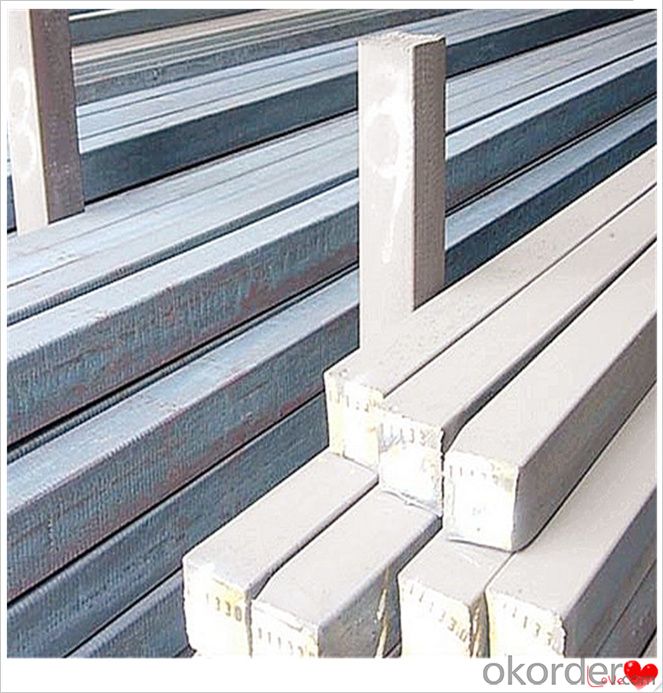
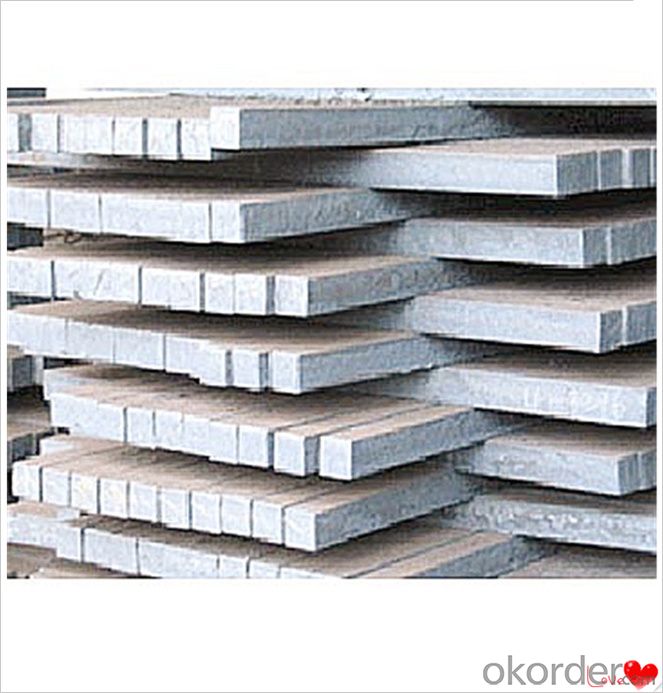
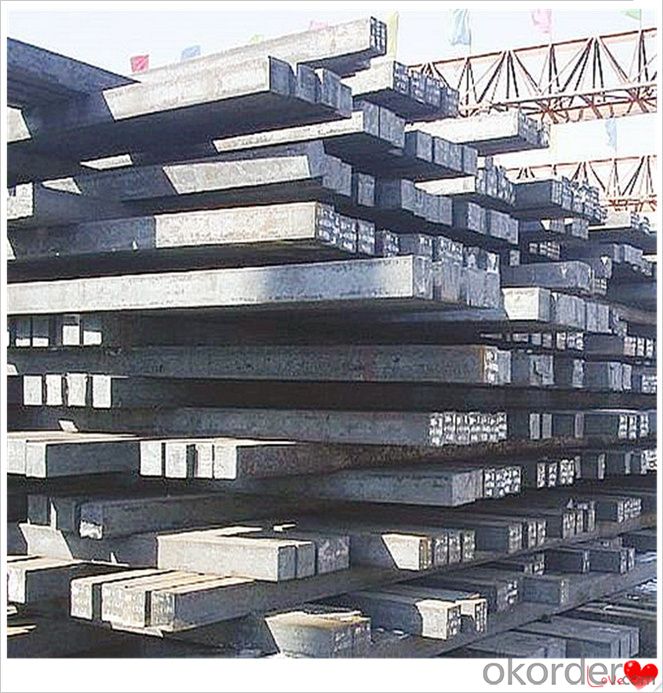
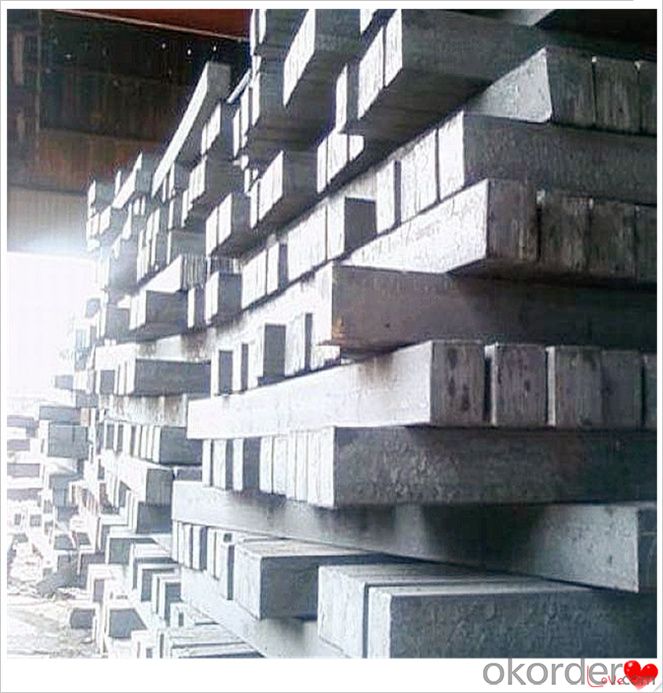
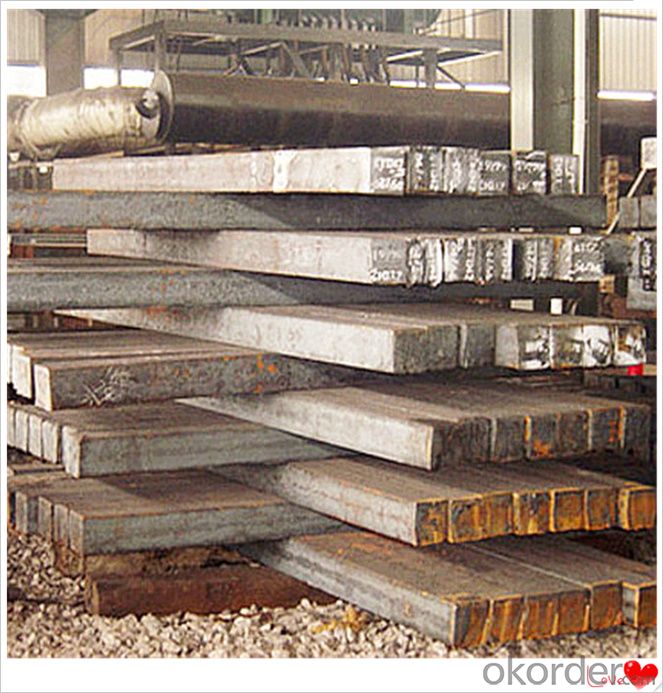
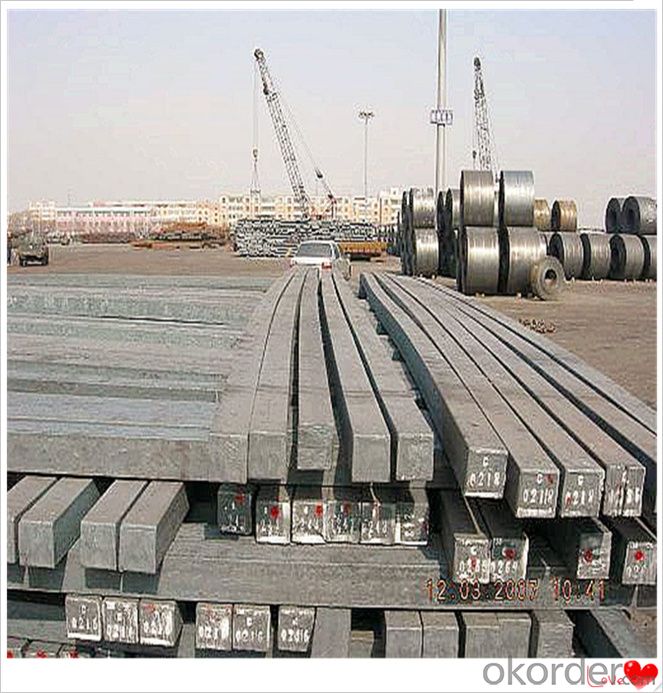
Processing
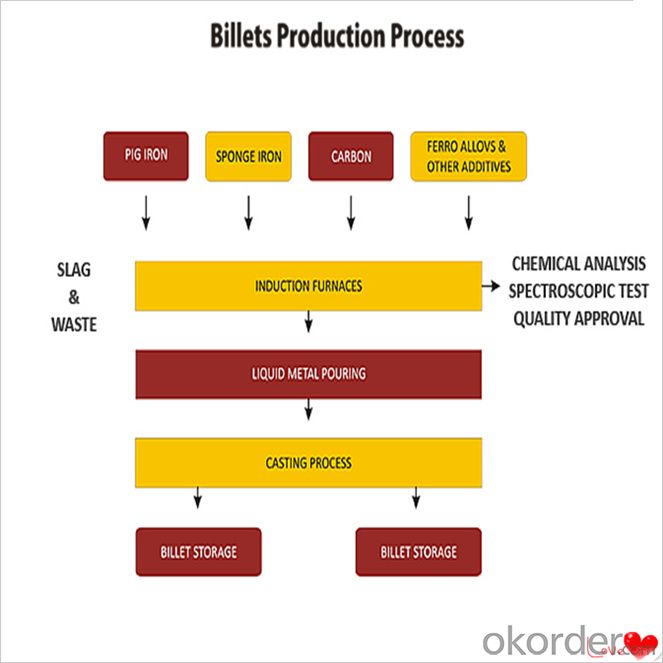
Usage-Billet Steel
Used for the plant, the bridge,shipment building high-rise building construction,lifting and transportation machinery, equipment manufracturing base building the support foundation pile manufacturing.
Billets, or ingots (as they sometimes referred to), are not of practical use until they have been formed into more functional shapes and sizes. While they have already been put in the furnace, they still require a series of shaping and molding procedures such as hot and cold working, milling and cutting before they are sold in hardware stores, or used for different applications. The unformed billets, however, can be used in striking currency such as coins and as reserves, similar to gold bars.
FAQ-Billet Steel
We have organized several common questions for our clients,may help you sincerely:
1) How about your company?
A world class manufacturer & supplier of castings forging in carbon steel and alloy steel,is one of the large-scale professional investment casting production bases in China,consisting of both casting foundry forging and machining factory. Annually more than 8000 tons Precision casting and forging parts are exported to markets in Europe,America and Japan. OEM casting and forging service available according to customer’s requirements.
2) How to guarantee the quality of the products?
We have established the international advanced quality management system,every link from raw material to final product we have strict quality test;We resolutely put an end to unqualified products flowing into the market. At the same time, we will provide necessary follow-up service assurance.
3) How long can we receive the product after purchase?
In the purchase of product within three working days, We will arrange the factory delivery as soon as possible. The pecific time of receiving is related to the state and position of customers.Commonly 7 to 10 working days can be served.
4)Do you have your own QC department?
Yes, we have, our QC department will inspect the goods during the process of mass production and after completion of production.
hot sale!!! Cast Steel Grades/ mild steel bar/ billet steel
(1): High quality steel with reasonable price.
(2): Wide excellent experiences with after-sale service.
(3): Every process will be checked by responsible QC which insures every product's quality.
(4): Professional packing teams which keep every packing safely.
(5): Trial order can be done in one week.
(6): Samples can be provided as your requirements.
- Q: What are the different methods of steel billet surface painting?
- Various industries commonly use several different methods for painting the surface of steel billets. These methods include: 1. Spray painting: A spray gun is utilized to apply a thin and even layer of paint onto the steel billet surface. This method ensures a smooth and consistent finish, allowing for efficient coverage. 2. Powder coating: An electrostatic charge is used to apply a dry powder to the steel billet surface. The powder adheres to the surface and is then heated to create a durable and long-lasting coating. Powder coating offers excellent resistance against corrosion, chemicals, and abrasion. 3. Electroplating: The steel billet is immersed in a solution containing a metal salt. By applying a direct current, the metal ions in the solution are deposited onto the billet surface. This method enhances the appearance and durability of the steel, providing a protective and decorative coating. 4. Hot-dip galvanizing: The steel billet is immersed in a bath of molten zinc. The zinc forms a protective layer on the billet surface, offering exceptional corrosion resistance. Hot-dip galvanizing is commonly used for outdoor applications where the steel is exposed to harsh environmental conditions. 5. Epoxy coating: Epoxy coatings are applied as a two-part system, combining a resin and a hardener that are then applied to the steel billet surface. The epoxy cures to create a tough and chemical-resistant coating, protecting against corrosion and abrasion. 6. Electrophoretic painting: The steel billet is immersed in a tank containing a paint solution, and an electric current is applied. The electric charge causes the paint particles in the solution to migrate towards the billet surface, resulting in a uniform and consistent coating. Each method has its own advantages and disadvantages, and the choice of method depends on factors such as the desired finish, the environment in which the steel billet will be used, and the required level of protection.
- Q: Can steel billets be used in the production of medical equipment?
- Yes, steel billets can be used in the production of medical equipment. Steel is known for its strength, durability, and resistance to corrosion, making it an ideal material for manufacturing various medical devices. Steel billets, which are the initial semi-finished product of steel production, can be further processed and shaped into specific components or parts required for medical equipment. These components can include surgical instruments, implants, orthopedic devices, needles, and other medical tools. Steel's mechanical properties and ability to withstand sterilization processes make it a suitable choice for producing safe and reliable medical equipment.
- Q: What are the main factors affecting the toughness of steel billets?
- Steel billets' toughness can be influenced by several main factors. Firstly, the chemical composition of the steel, including the presence of elements like carbon, manganese, and silicon, has a significant impact on its toughness. For instance, higher carbon content increases hardness but decreases toughness, while the addition of alloying elements like nickel or chromium can improve both strength and toughness. Secondly, the heat treatment process, involving the rate of cooling and temperature, can greatly affect the toughness of steel. Quenching and tempering are common techniques used to enhance toughness by controlling the microstructure and reducing brittle phases. Thirdly, the microstructure of steel, determined by factors such as cooling rate, grain size, and phase distribution, greatly influences its toughness. Fine-grained structures tend to exhibit better toughness compared to coarse-grained ones as smaller grains inhibit crack propagation. Moreover, impurities and inclusions in steel can negatively impact its toughness. These impurities act as stress concentrators, leading to localized failure and reduced overall toughness. Ensuring proper purification and impurity removal during the steelmaking process is crucial. Additionally, various manufacturing processes, such as rolling or forging, can influence the toughness of steel billets. These processes induce residual stresses and introduce defects that affect the material's toughness. Proper control and optimization of these processes can enhance toughness. Lastly, the specific application and service conditions of the steel billets also determine its toughness requirements. Factors like temperature, stress levels, and exposure to corrosive environments impact toughness performance. Understanding and accounting for these conditions is crucial in selecting the appropriate steel grade and ensuring long-term durability. In conclusion, the toughness of steel billets is influenced by factors such as composition, heat treatment, microstructure, impurities, manufacturing processes, and service conditions. By carefully considering and optimizing these factors, manufacturers can produce steel billets with desired toughness properties for various applications.
- Q: How are steel billets recycled?
- Steel billets undergo the process of steel billet recycling, wherein they are collected from different sources like manufacturing plants, construction sites, and scrap yards. These collected billets are then transported to a recycling facility where they go through a series of steps to become new steel products. The initial step in steel billet recycling involves sorting and cleaning. The collected billets are sorted based on their size, shape, and quality, and any impurities or foreign materials are eliminated during this stage. Once the billets are sorted and cleaned, they are prepared for the next step in the recycling process. The subsequent step is melting, in which the cleaned steel billets are melted down in a furnace at extremely high temperatures. This melting process helps in separating any remaining impurities and enables the steel to be shaped into new forms. The molten steel is then poured into molds or cast into different shapes according to the desired end product. Once the steel has cooled and solidified, it undergoes further processing to achieve the desired specifications. This may include rolling, forging, or extruding the steel billets to create various steel products like bars, rods, or sheets. These newly formed steel products are then thoroughly inspected for quality and undergo rigorous testing to ensure they meet industry standards. The final step in steel billet recycling is distribution and usage. The recycled steel products are transported to various industries such as construction, automotive, or manufacturing, where they are utilized to create a wide range of products. By recycling steel billets, we can reduce the demand for raw materials, conserve energy, and minimize environmental impact. In conclusion, the process of steel billet recycling involves sorting, cleaning, melting, shaping, and distributing. This recycling process allows us to reuse steel billets and transform them into new steel products, thereby contributing to a more sustainable and environmentally friendly approach to steel production.
- Q: What are the different types of surface defect detection methods for steel billets?
- There are various types of surface defect detection methods used for steel billets. Some of the commonly employed techniques include visual inspection, magnetic particle inspection, ultrasonic testing, eddy current testing, and laser scanning. 1. Visual Inspection: This is the simplest and most traditional method, where trained inspectors visually examine the surface of steel billets for any signs of defects such as cracks, scratches, or foreign material. 2. Magnetic Particle Inspection (MPI): MPI is a non-destructive testing method that uses magnetic fields and iron particles to detect surface defects. The billet is magnetized, and iron particles are applied to the surface. Any defect causes a leakage of magnetic flux, attracting the iron particles and forming visible indications. 3. Ultrasonic Testing (UT): UT involves the use of high-frequency sound waves to detect internal and surface defects in steel billets. A transducer emits ultrasonic waves into the billet, and the reflected waves are analyzed to identify any flaws or irregularities. 4. Eddy Current Testing (ECT): ECT utilizes electromagnetic induction to detect surface defects. A coil carrying an alternating current is placed near the billet's surface, which generates eddy currents. Any variation in the surface, like cracks or corrosion, alters the eddy currents, and this change is detected by the instrument. 5. Laser Scanning: Laser scanning is a relatively advanced method that uses laser technology to scan the surface of steel billets. The laser beam reflects off the surface, and a sensor analyzes the reflected light to identify any surface defects, such as scratches or dents. These different methods vary in terms of their sensitivity, speed, and cost-effectiveness. The choice of the appropriate surface defect detection method depends on factors such as the required level of accuracy, the type of defects to be detected, and the specific industry requirements.
- Q: How are steel billets used in the manufacturing of chemical processing equipment?
- Steel billets are used in the manufacturing of chemical processing equipment as raw material for forging or casting various components such as valves, pumps, heat exchangers, and reactors. These billets are shaped, machined, and treated to meet the specific requirements of the equipment, ensuring strength, durability, and resistance to corrosion and high temperatures.
- Q: What is the average lifespan of a steel billet in a structural application?
- The average lifespan of a steel billet in a structural application can vary depending on various factors such as the quality of the steel, environmental conditions, maintenance practices, and the specific structural application. However, with proper care and maintenance, steel billets can generally have a lifespan of several decades or even longer in structural applications.
- Q: How are steel billets used in the manufacturing of industrial machinery parts?
- Steel billets possess unique properties and versatility, making them indispensable for the production of industrial machinery parts. These semi-finished steel products are typically cast in square or rectangular shapes and serve as the foundational material for critical components like gears, shafts, pistons, and others. To facilitate manipulation and shaping, the first step involves heating the steel billets to a specific temperature. Once heated, they undergo a process known as hot rolling, where they are passed through rollers to decrease their cross-sectional area and increase their length. This not only enhances the steel's strength and durability but also refines its microstructure, resulting in improved mechanical properties. Following hot rolling, further processing takes place through machining operations such as cutting, drilling, milling, and grinding. These operations ensure precise dimensions and specifications required for specific machinery parts, enabling seamless integration into the overall machinery assembly. The high strength, toughness, and resistance to wear and tear of steel billets make them highly sought after in the manufacturing of industrial machinery parts. Their exceptional machinability allows for intricate designs and patterns, ensuring optimal functionality and performance. Additionally, steel billets can be easily welded, enabling the joining of multiple parts to create robust structures. In summary, steel billets play a vital role in the manufacturing of industrial machinery parts. By providing a strong, durable, and versatile starting material, they enable the creation of precise and reliable components essential for the smooth operation of industrial machinery in sectors such as manufacturing, construction, and transportation.
- Q: What are the key factors driving the demand for steel billets?
- The demand for steel billets is influenced by several key factors. Firstly, the construction industry plays a crucial role in driving this demand. Steel is widely utilized in construction projects for various purposes, including structural framing, reinforcement, and support systems. With the continuous growth of urbanization and increasing infrastructure projects, the demand for steel billets also rises. Additionally, the automotive industry significantly impacts the demand for steel billets. Steel is an essential material in the manufacturing of automobiles, such as car bodies, chassis, and engine components. As the global automotive industry expands and consumer demand for vehicles increases, the demand for steel billets also rises accordingly. Moreover, the energy sector contributes to the demand for steel billets, particularly in the production of oil and gas pipelines. Steel billets are used in the manufacturing of seamless pipes, which are vital for the transportation of oil and gas over long distances. As the demand for energy continues to grow, there is a corresponding need for steel billets to support pipeline construction. Furthermore, the manufacturing and machinery industries heavily rely on steel billets. Steel is a fundamental material used in various manufacturing processes, from industrial machinery to consumer products. As these industries grow and evolve, the demand for steel billets remains steady. Lastly, the demand for steel billets is significantly influenced by global economic growth and industrialization in emerging markets. Countries with rapidly developing economies, such as China and India, are major consumers of steel billets as they undergo massive infrastructure projects and industrial expansion. In conclusion, the demand for steel billets is primarily driven by the construction industry, automotive sector, energy sector, manufacturing industry, and global economic growth. These factors collectively contribute to the sustained and growing demand for steel billets in the market.
- Q: How are steel billets used in the manufacturing of machine parts?
- Machine parts manufacturing heavily relies on steel billets, which serve as vital raw materials. These billets, solid and semi-finished steel products, are cast into specific shapes and sizes. The utilization of steel billets involves a series of stages. To begin with, the steel billets are heated in a furnace to a specific temperature. This heating process softens the metal, increasing its malleability. Once the desired temperature is reached, the billets are ready for further processing. Subsequently, the heated billets are transferred to a rolling mill, where they undergo hot rolling. During this process, the billets are subjected to pressure from a series of rollers, which shape them into bars, rods, or sheets according to the desired form. The hot rolling process ensures that the steel billets acquire the necessary dimensions and surface finish. Following hot rolling, the shaped steel billets undergo additional processing techniques, such as cutting, forging, or machining, to fabricate machine parts. These parts can encompass gears, shafts, valves, or any other components essential for machinery. The utilization of steel billets in machine parts manufacturing provides several advantages. Firstly, steel billets are renowned for their high strength and durability, making them ideal for producing parts capable of withstanding heavy loads and harsh operating conditions. Additionally, the malleability of steel billets enables the creation of intricate shapes and designs, ensuring the production of complex machine parts. Furthermore, steel billets can be easily customized to meet specific requirements. They can be alloyed with other metals or undergo various heat treatments to enhance properties such as hardness, corrosion resistance, or wear resistance. This versatility of steel billets makes them suitable for a wide range of machine parts across diverse industries. In conclusion, steel billets play a pivotal role in machine parts manufacturing. Through processes like hot rolling, cutting, forging, and machining, steel billets transform into diverse shapes and sizes, yielding durable and high-quality components for machinery. The strength and adaptability of steel billets render them indispensable raw materials in the manufacturing industry.
Send your message to us
Titanium Billet Turbo Compressor Wheel Q235,Q255,Q275,Q345,3SP,5SP,20MnSi
- Loading Port:
- China main port
- Payment Terms:
- TT OR LC
- Min Order Qty:
- 20 m.t.
- Supply Capability:
- 200000 m.t./month
OKorder Service Pledge
OKorder Financial Service
Similar products
Hot products
Hot Searches
Related keywords
